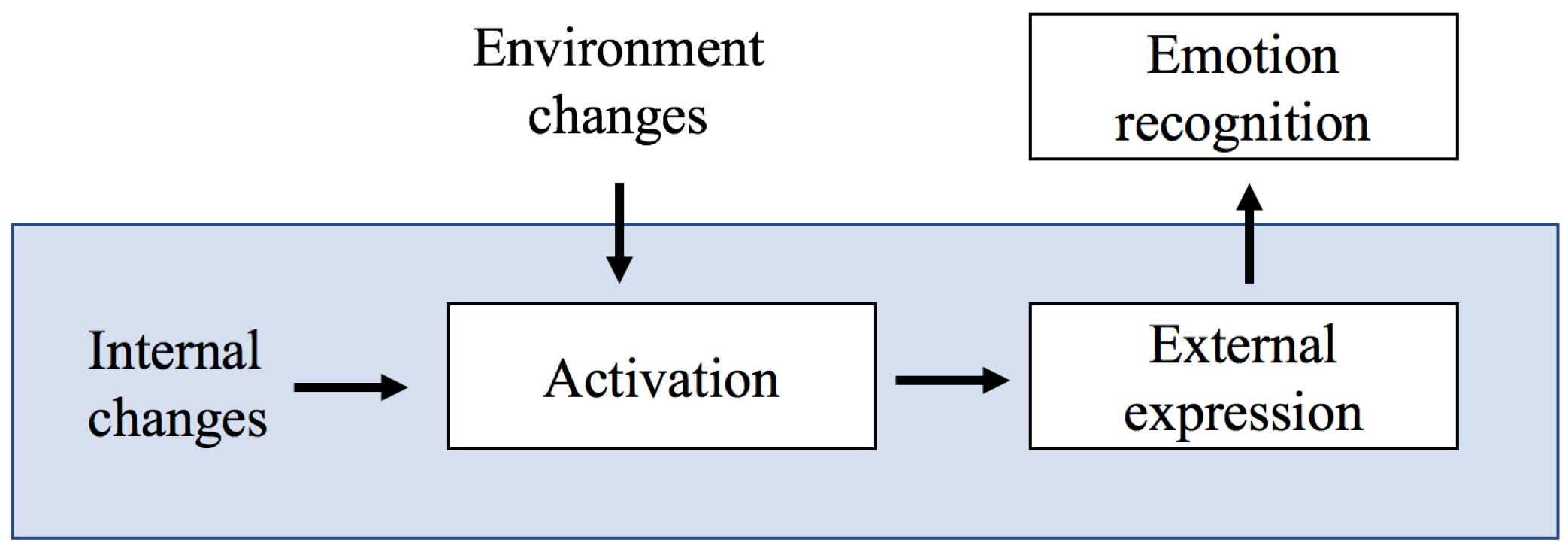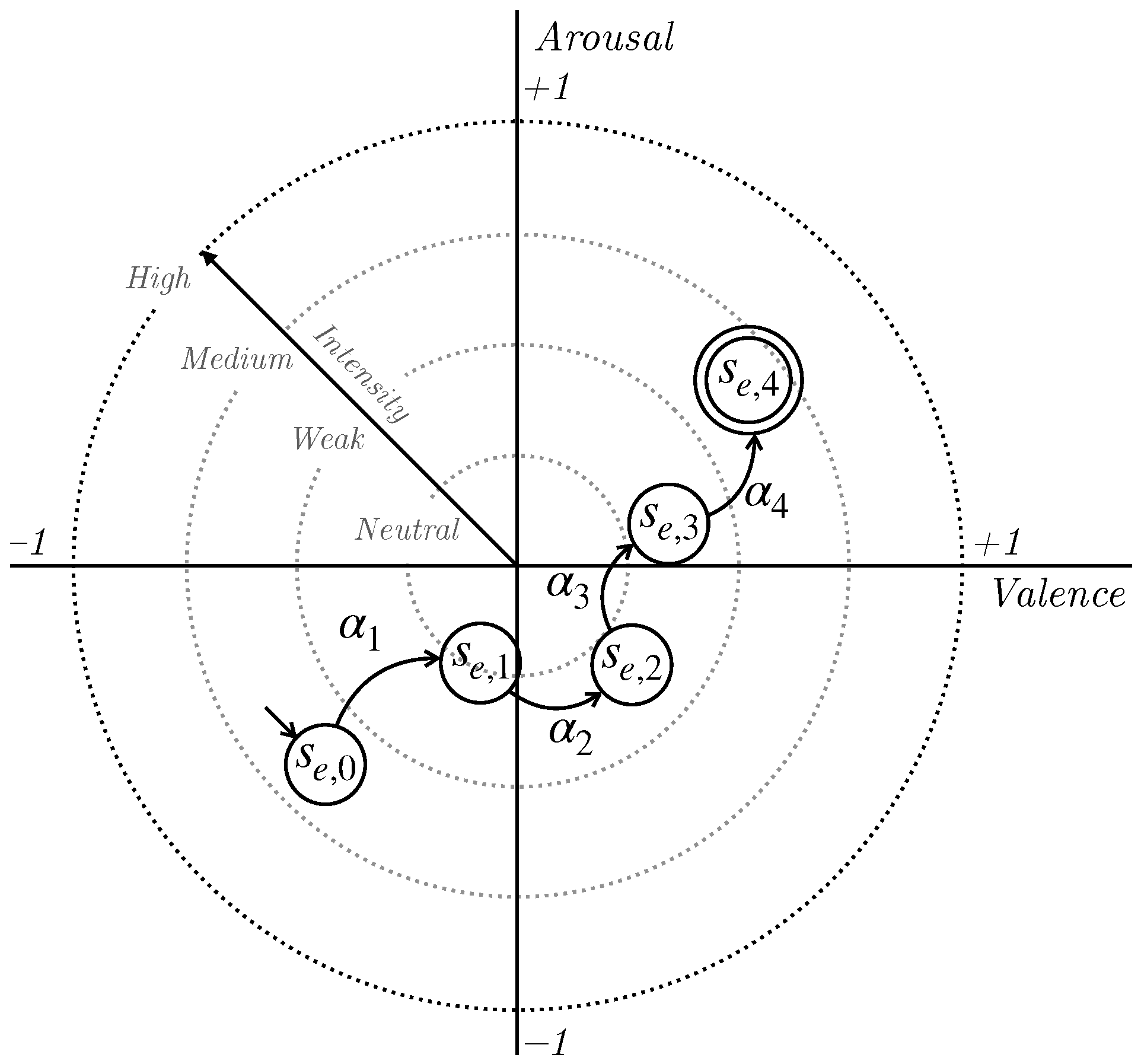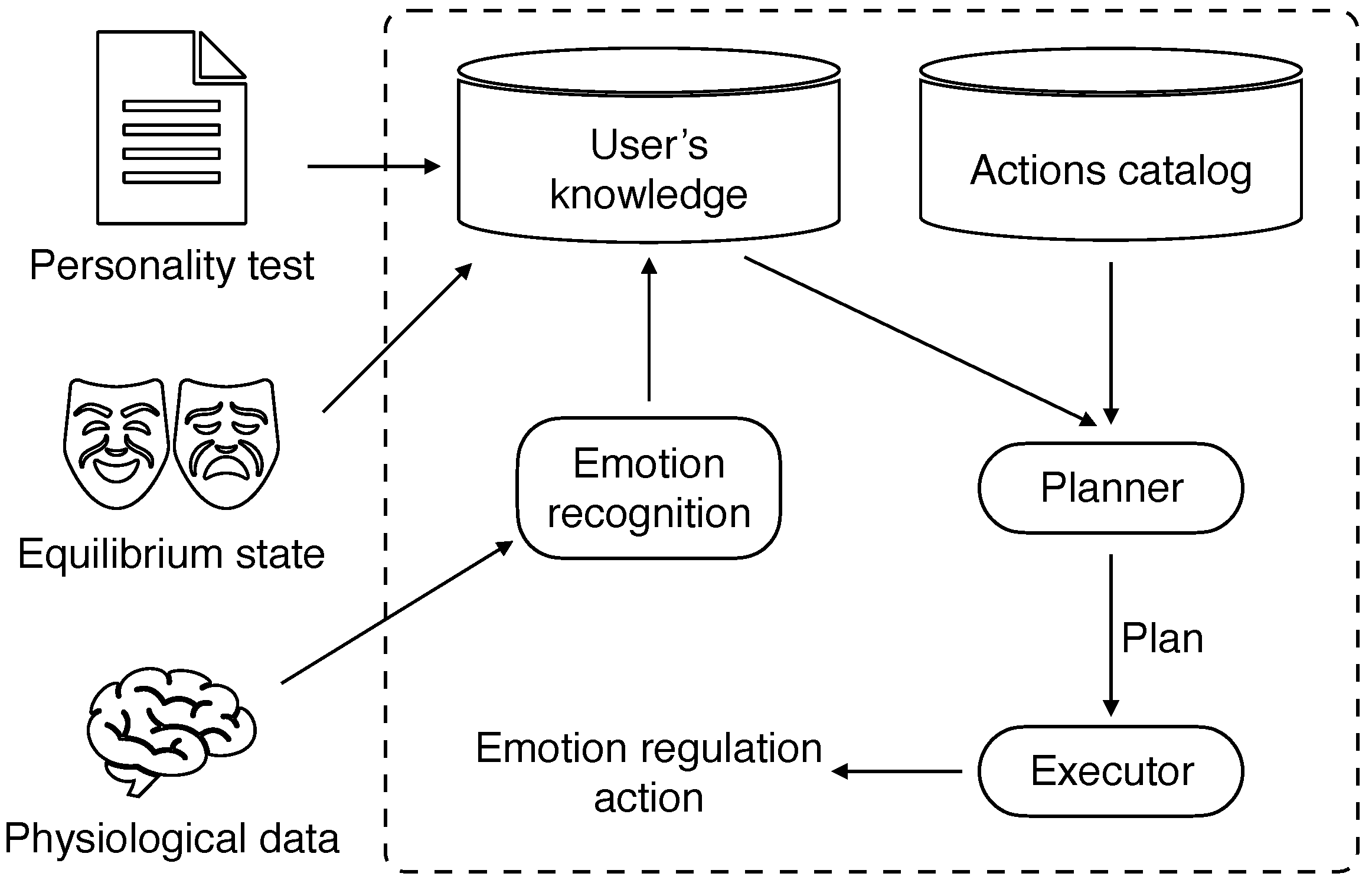
| Version | Summary | Created by | Modification | Content Size | Created at | Operation |
|---|---|---|---|---|---|---|
| 1 | Aaron Pico | -- | 1689 | 2024-03-08 17:22:24 | | | |
| 2 | Rita Xu | Meta information modification | 1689 | 2024-03-11 03:12:37 | | |
Video Upload Options
Emotion regulation is the human ability to modulate one’s or other emotions to maintain emotional well-being. Despite its importance, only a few computational models have been proposed for facilitating emotion regulation. To address this gap, a computational model for intelligent agents has been proposed for facilitating emotion regulation in individuals. This model is grounded in a multidimensional emotion representation and on J. Gross’s theoretical framework of emotion regulation. In this apporach, an intelligent agent selects the most appropriate regulation strategies to reach or maintain an individual’s emotional equilibrium considering the individual’s personality traits and specific characteristics.
1. Introduction

2. Process Model of Emotion Regulation

-
Situation selection: Strategies within situation selection focus on deciding what situations a person faces, for example, avoiding confronting situations that evoke negative emotions such as sadness. However, to apply this strategy effectively, it is necessary to have the ability to predict the emotional response that the situation will produce, which is difficult in many situations [11][15].
-
Situation modification: These strategies involve altering a situation to achieve a more desirable emotional response. This type of modification pertains specifically to altering the external physical environment. Sometimes, it may be difficult to distinguish between selection and modification strategies since the changes made in one situation may be perceived as creating a new situation instead [5][11][13].
-
Attentional deployment: Strategies within this family are aimed to redirect attention between elements of the external environment or between personal thoughts [16][17]. Distraction and concentration are the most common strategies. Distraction consists of redirecting attention from the emotional aspect of the situation to another, avoiding its emotional charge. Concentration would be its counterpart and refers to drawing attention to emotional features of a situation [18].
-
Cognitive change: Cognitive change strategies consist in altering the individual’s evaluation or appraisal of a situation. The most commonly reported technique is reappraisal, which involves altering the individual’s internal interpretation or understanding of the situation. Another strategy is decentering, which consists of seeing an event from a broader perspective, observing one’s inner experiences as transient and separate from one’s self [19][20].
-
Response modulation: Response modulation involves influencing the emotional response in its behavioral, experiential, or physiological components. A well documented strategy in this family is expressive suppression, which consists of inhibiting the externalization of emotional expressions. Exercise, sleep, and alcohol or drug use are also considered ways of response modulation.
3. Affective State Representation

4. Emotion Regulation Agent
The agent model is composed of three fundamental components. An emotion recognition process, a personalized dynamic planner and a process in charge of executing the actions focused on regulating the user’s emotion. The agent’s behaviour relies on the BDI (Beliefs-Desires-Intentions) model [24], which is a conceptual framework for modeling agents based on practical reasoning.
The affective intelligent agent interacting with an individual will detect the emotions expressed by the individual. This emotion recognition process relies on the analysis of physiological data of the individual. To minimize the impact of the physiological data collection process on the individual’s behavior, only minimally invasive techniques are considered. Among the possible techniques [25], researchers currently consider facial recognition, body temperature, and galvanic skin response.
Different people show different emotion regulation abilities. Similarly, different regulation actions will have different effects depending on the person performing the regulation action. Whenever possible, it is important to know the personality characteristics of the individual so that the intelligent agent is able to select the emotion regulation strategies that a priori are most appropriate to the personality traits of the individual. These personality traits can be obtained through personality tests. The proposal employs the Big Five personality model (Five-Factor-Model), also known as OCEAN [26][27].
Based on the emotion recognized in the individual, their personality traits, and their detected state of emotional equilibrium, the intelligent affective agent must select a set of emotion regulation actions and carry out the actions to achieve the emotion regulation of the individual and bring them back to their emotional equilibrium. However, the emotion regulation strategies proposed by Gross are not specific enough for application in a computational model. Therefore, emotion regulation strategies should be divided into more specific sub-strategies so that they can be converted into real actions to be applied by the agent and their emotional impact can be estimated.

Figure 4. Emotion regulation system.
The computational model associates each emotion regulation action with the possible changes that can produce in the individual’s emotional state and the costs of applying that regulation action. The intelligent agent uses a planning algorithm to select the best strategy based on the individual’s emotional state, the effect of the regulation actions, the cost of applying each regulation action, and an equilibrium emotional state adjusted to the individual’s emotional equilibrium and personality. This is an iterative process in which a dynamic planner analyzes the actual effect that each applied emotion regulation strategy has produced in the individual until the desired equilibrium emotional state is reached.
This process, which considers general knowledge derived from personality traits as a first approximation and individualized responses observed in real-time interactions to enhance personalization to the individual, ensures that the agent continuously improves its ability to assist individuals in managing their emotions effectively, contributing to long-term emotional well-being.
References
- Darwin, C. The Expression of the Emotions in Man and Animals; John Murray: London, UK, 1872.
- Gross, J.J. The extended process model of emotion regulation: Elaborations, applications, and future directions. Psychol. Inq. 2015, 26, 130–137.
- Gratch, J.; Marsella, S. Appraisal models. In The Oxford Handbook of Affective Computing; Oxford Academic: Oxford, UK, 2015; chapter Appraisal models; pp. 54–67.
- Ferrari, P.; Gerbella, M.; Coudé, G.; Rozzi, S. Two different mirror neuron networks: The sensorimotor (hand) and limbic (face) pathways. Neuroscience 2017, 358, 300–315.
- Gross, J.J. Emotion regulation: Current status and future prospects. Psychol. Inq. 2015, 26, 1–26.
- McRae, K.; Gross, J.J. Emotion regulation. Emotion 2020, 20, 1.
- Gross, J. Handbook of Emotion Regulation, 2 ed.; The Guilford Press: New York, NY, USA, 2014.
- Kaplan, J. Co-regulation in technology enhanced learning environments. In Proceedings of the International Workshop on Learning Technology for Education in Cloud, Santiago, Chile, 2–5 September 2014; Springer: Berlin/Heidelberg, Germany, 2014; pp. 72–81.
- Balaji, M.S.; Roy, S.K.; Quazi, A. Customers’ emotion regulation strategies in service failure encounters. Eur. J. Mark. 2017, 51, 960–982.
- Hoffner, C.A.; Lee, S. Mobile phone use, emotion regulation, and well-being. Cyberpsychol. Behav. Soc. Netw. 2015, 18, 411–416.
- Gross, J.J. Emotion regulation. Handb. Emot. 2008, 3, 497–513.
- Picard, R.W. Affective Computing; The MIT Press: Cambridge, MA, USA, 1997.
- Gross, J.J. The emerging field of emotion regulation: An integrative review. Rev. Gen. Psychol. 1998, 2, 271–299.
- Kever, A.; Pollatos, O.; Vermeulen, N.; Grynberg, D. Interoceptive sensitivity facilitates both antecedent-and response-focused emotion regulation strategies. Personal. Individ. Differ. 2015, 87, 20–23.
- Sheppes, G. Emotion regulation choice: Theory and findings. Handb. Emot. Regul. 2014, 2, 126–139.
- DiGirolamo, M.A.; Kibrislioglu Uysal, N.; McCall, E.C.; Isaacowitz, D.M. Attention-focused emotion regulation in everyday life in adulthood and old age. Emotion 2022, 23, 633.
- Todd, R.M.; Cunningham, W.A.; Anderson, A.K.; Thompson, E. Affect-biased attention as emotion regulation. Trends Cogn. Sci. 2012, 16, 365–372.
- Webb, T.L.; Miles, E.; Sheeran, P. Dealing with feeling: A meta-analysis of the effectiveness of strategies derived from the process model of emotion regulation. Psychol. Bull. 2012, 138, 775.
- Bernstein, A.; Hadash, Y.; Lichtash, Y.; Tanay, G.; Shepherd, K.; Fresco, D.M. Decentering and related constructs: A critical review and metacognitive processes model. Perspect. Psychol. Sci. 2015, 10, 599–617.
- Kobayashi, R.; Shigematsu, J.; Miyatani, M.; Nakao, T. Cognitive reappraisal facilitates decentering: A longitudinal cross-lagged analysis study. Front. Psychol. 2020, 11, 103.
- Pereira, G.; Dimas, J.; Prada, R.; Santos, P.A.; Paiva, A. A generic emotional contagion computational model. In Proceedings of the Affective Computing and Intelligent Interaction: 4th International Conference, ACII 2011, Memphis, TN, USA, 9–12 October 2011; Springer: Berlin/Heidelberg, Germany, 2011; pp. 256–266.
- Russell, J.A. A circumplex model of affect. J. Personal. Soc. Psychol. 1980, 39, 1161–1178.
- Egger, M.; Ley, M.; Hanke, S. Emotion recognition from physiological signal analysis: A review. Electron. Notes Theor. Comput. Sci. 2019, 343, 35–55.
- Rao, A.S.; Georgeff, M.P. BDI agents: From theory to practice. In Proceedings of the Icmas, San Francisco, CA, USA, 12–14 June 1995; Volume 95, pp. 312–319.
- Shu, L.; Xie, J.; Yang, M.; Li, Z.; Li, Z.; Liao, D.; Xu, X.; Yang, X. A Review of Emotion Recognition Using Physiological Signals. Sensors 2018, 18, 2074.
- Digman, J. Personality structure: Emergence of the five-factor model. Annu. Rev. Psychol. 1990, 41, 417–440.
- McCrae, R.R.; John, O.P. An introduction to the five-factor model and its applications. J. Personal. 1992, 60, 175–215.




